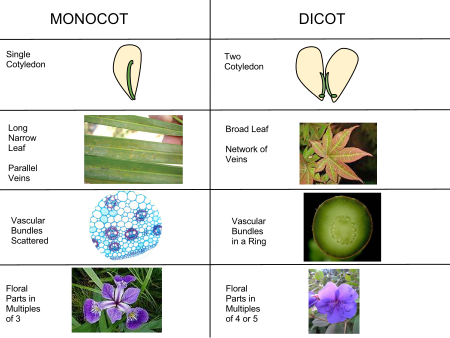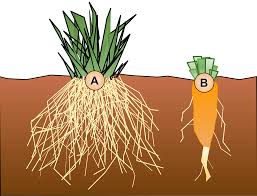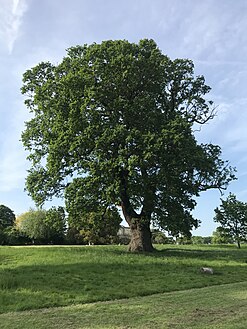Introduction:-
Have you ever wondered why some plants seem to thrive in your garden while others struggle? The secret lies in their fundamental structure – a attractive world hidden underneath the surface and within every leaf, stem, and flower.
Enter the dominion of dicotyledonous and monocotyledonous plants, two distinct categories that form the backbone of the plant kingdom. These differences, though often overlooked, play a crucial role in how plants grow, reproduce, and adapt to their environments.
From the complex root systems that secure them to the earth, to the delicate flower structures that ensure their survival, these plant anatomies can revolutionize your approach to gardening, agriculture, and even conservation.
In this exploration of plant anatomy, we’ll uncover the key differences between dicots and monocots, delving into their root systems, stem structures, leaf characteristics, and more.

Plant Classification
Definition of dicotyledons and monocotyledons
Dicotyledons (dicots) and monocotyledons (monocots) are two major groups of flowering plants that differ in their anatomical structures.
Dicots typically have two seed leaves (cotyledons), while monocots have only one. This fundamental distinction leads to various other differences in their plant structures.
Evolutionary significance
The divergence between dicots and monocots occurred approximately 150 million years ago, marking a significant event in plant evolution. This split has led to diverse adaptations and specializations, allowing plants to thrive in various ecological niches.
Aspect | Dicotyledons | Monocotyledons |
Age | Older lineage | Younger lineage |
Diversity | More diverse | Less diverse |
Examples | Oak, rose, sunflower | Grass, palm, orchid |
Key differences between the two groups
The distinctions between dicots and monocots extend beyond their seed leaves:
Root system:
Dicots: Tap root system
Monocots: Fibrous root system
Leaf venation:
Dicots: Netted (reticulate) venation
Monocots: Parallel venation
3. Flower parts:
Dicots: Usually in multiples of four or five
Monocots: Usually in multiples of three
4. Vascular bundles:
Dicots: Arranged in a ring
Monocots: Scattered throughout the stem
These fundamental differences influence various aspects of plant growth, development, and adaptability, which we will explore in more detail in the following sections.

Root System Comparison
The root systems of dicotyledonous and monocotyledonous plants exhibit distinct characteristics that reflect their evolutionary adaptations and functional requirements. Let’s explore these differences in detail.
A. Adaptations to different soil types
Dicotyledonous and monocotyledonous plants have evolved unique root structures to thrive in various soil conditions:
Dicotyledons:
Deep-growing taproots
Ideal for penetrating compact soils
Effective in accessing water from deeper layers
Monocotyledons:
Shallow, spreading fibrous roots
Well-suited for loose or sandy soils
Efficient in absorbing surface water and nutrients
Root Type | Soil Adaptation | Water Access |
Taproot | Compact soils | Deep water |
Fibrous | Loose soils | Surface water |
B. Nutrient absorption capabilities
The different root structures of dicots and monocots influence their nutrient uptake:
Dicotyledonous plants:
Larger surface area due to secondary growth
Enhanced ability to absorb minerals from deeper soil layers
More efficient in nutrient-poor soils
2. Monocotyledonous plants:
Extensive network of fine roots
Rapid absorption of nutrients from topsoil
Advantageous in frequently fertilized or naturally rich soils
C. Taproot vs. fibrous root systems
The fundamental difference between dicot and monocot root systems lies in their structure:
Taproot system (Dicots):
Primary root grows vertically downward
Secondary roots branch off from the main taproot
Examples: carrots, dandelions, oak trees
Fibrous root system (Monocots):
Multiple roots of similar size emerge from the stem base
Roots spread horizontally near the soil surface
Examples: grasses, corn, rice
These distinct root systems not only influence plant stability and nutrient absorption but also play crucial roles in ecosystem functions and agricultural practices. Understanding these differences is essential for optimizing plant growth and management in various environments.

Stem Structure and Function
The stem is a crucial component of both dicotyledonous and monocotyledonous plants, serving various functions and exhibiting distinct characteristics. Let’s explore the key aspects of stem structure and function in these plant types.
A. Stem modifications for storage and support
Stems have evolved to perform specialized functions beyond their primary role of supporting leaves and conducting nutrients. Here are some common stem modifications
Rhizomes: Underground horizontal stems
Tubers: Swollen underground stems for food storage
Bulbs: Short, vertical underground stems with fleshy leaves
Corms: Swollen underground stem bases
Tendrils: Slender, climbing modifications
Modification | Example (Dicot) | Example (Monocot) |
Rhizome | Ginger | Bamboo |
Tuber | Potato | Canna lily |
Bulb | Onion | Garlic |
Corm | Cyclamen | Gladiolus |
Tendril | Grape vine | – |
B. Growth patterns and branching
Dicots and monocots exhibit different growth patterns and branching habits:
Dicots: Typically show extensive branching, with a main stem and multiple lateral branches.
Monocots: Often have limited branching, with a single main stem or multiple stems arising from the base.
C. Vascular bundle arrangement
The arrangement of vascular bundles in stems differs significantly between dicots and monocots:
Dicotyledonous stems:
Vascular bundles arranged in a ring
Presence of cambium for secondary growth
Allows for increase in stem diameter over time
Monocotyledonous stems:
Vascular bundles scattered throughout the stem
Lack of cambium for secondary growth
Limited increase in stem diameter
These structural differences influence the plants’ growth patterns, adaptability, and overall morphology. Understanding these distinctions is crucial for plant identification and classification. Next, we’ll examine the leaf characteristics of dicots and monocots, which further highlight the unique features of these two major plant groups.
Leaf Characteristics
Now that we’ve explored the stem structure of dicotyledonous and monocotyledonous plants, let’s examine their leaf characteristics, which play a crucial role in their overall function and appearance.
A. Photosynthetic efficiency
The photosynthetic efficiency of leaves in dicots and monocots differs due to their structural variations:
Dicots: Generally have broader leaves with a larger surface area, allowing for increased light absorption and potentially higher photosynthetic rates.
Monocots: Often have long, narrow leaves that may be less efficient in light capture but are adapted to specific environmental conditions.
Feature | Dicots | Monocots |
Leaf shape | Broad, varied | Long, narrow |
Surface area | Larger | Smaller |
Light absorption | Higher | Lower |
B. Shape and arrangement on the stem
The shape and arrangement of leaves on the stem, known as phyllotaxy, differ between dicots and monocots:
Dicots:
Varied leaf shapes (e.g., ovate, cordate, palmate)
Typically have reticulate venation
Often arranged alternately or oppositely on the stem
2. Monocots:
Generally elongated, strap-like leaves
Usually have parallel venation
Often arranged in a spiral pattern around the stem
C. Venation patterns
Venation patterns are one of the most distinctive features differentiating dicot and monocot leaves:
Dicots: Exhibit reticulate (net-like) venation
Primary vein branches into smaller veins
Creates a complex network of interconnected veins
Monocots: Display parallel venation
Veins run parallel to each other along the length of the leaf.
May have cross-veins connecting the parallel veins